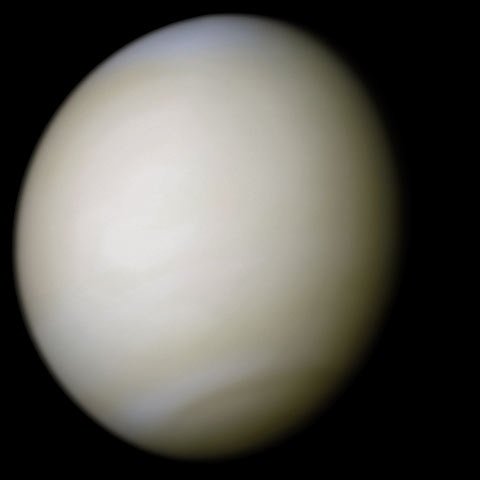Current Info for Observer
as of 04/25/2024 10:06 a.m.
Please login to view current observation details
General Info
as of 04/25/2024 10:06 a.m.
| Type | Planet |
| Constellation | Pisces |
| Magnitude | -3.79 |
| Orbits | Sun |
| Right ascension | 1:34:37.48 (Hours) |
| Declination | 8:25:42.9 (Deg) |
| % illuminated | 98.294 |
| Distance from Earth | 1.68948AU |
| Distance from Sun | 0.72590AU |
| Elongation | -10:46:32.8 |
| Mass | 0.815 ⊕ |
The second planet | |
☉ Solar Masses ⊕ Earth Masses j Jupiter Masses
70mm Refractor
100 points
Observed from Los Angeles. Light pollution is horrible and not much else is visible in the sky.
10" Dobsonian
100 points
Celestron Omni XLT 150
0 points
Venus at half-phase. Very bright!
Celestron SkyMaster 15x70 Binoculars
100 points
I couldn't get up early enough to get out my telescope but it was still an amazing site to see red/orange Mars, Jupiter and bright Venus so close to each other!
7x50 Binos
100 points
Great view of Venus, Jupiter, Mars and Mercury in one section of the sky!
Generate a finder chart
The following form will generate a PDF finder chart suitable for printing using to locate objects in the sky with your telescope!
The Date is only really useful for solar system objects, as deep space objects move measurably only on a galactic timescale.
The larger the F.O.V (field of view), the more "zoomed out" the object will appear. It can be helpful to print several charts of the same object with different field of views.
Limiting the magnitude (remember, lower magnitude means brighter!) of stars and objects can make sure your chart is not cluttered with dim objects that you may not be visible to you anyway. The defaults are good, but try experimenting with raising and lowering the values.
Please login to post comments
